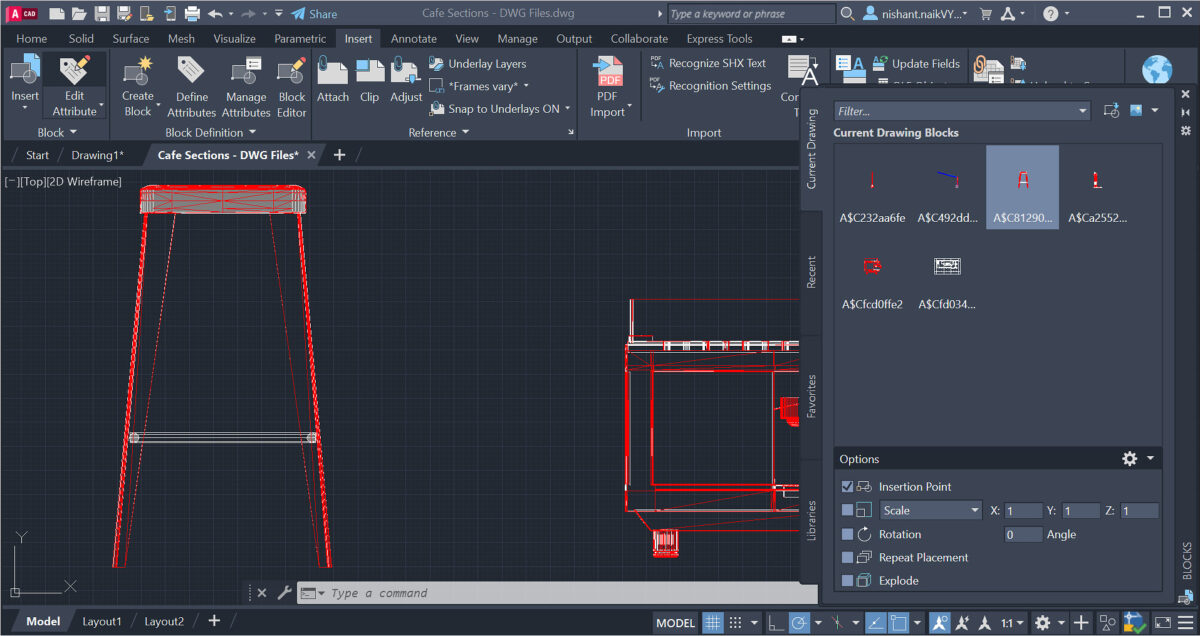Auto CAD, the world of automotive engineering is ever-evolving. As technology advances, it is important for engineers to stay up-to-date with the latest software and tools available to them in order to maximize their potential. CAD modeling software has become an invaluable tool for engineers working on automotive applications as it allows them to create detailed designs for any type of project. In this article, we have compiled a list of the top 7 best CAD modeling software for automotive applications in 2023.
Auto CAD Software
AutoCAD is one of the most popular CAD modeling software for automotive applications. It offers a wide range of features that allow designers and engineers to create detailed 3D models with ease. AutoCAD is also known for its compatibility with other software and hardware, making it an ideal choice for collaborative projects.
Another great feature of AutoCAD is its ability to generate realistic renderings and animations. This is essential in the automotive industry where stakeholders need to visualize the design before production. With AutoCAD’s simulation tools, users can simulate how their designs will perform under different conditions such as aerodynamics or crash testing.
Lastly, AutoCAD has a large community of users who share tips and tricks on forums and social media platforms. This makes it easier for new users to learn the software quickly and efficiently. With regular updates from Autodesk, AutoCAD continues to evolve with innovative technology that sets it apart from other CAD modeling software in the market today.
Section 1: Autodesk Fusion 360
Autodesk Fusion 360 is an advanced CAD software with a strong emphasis on collaboration and cloud-based functionalities. This tool offers robust 3D modeling tools, simulation capabilities, and CAM features that are ideal for automotive applications. With its intuitive interface, Fusion 360 allows engineers and designers to create complex designs without sacrificing speed or accuracy.
One of the key advantages of Autodesk Fusion 360 is its ability to integrate easily with other software tools. It can share data with popular design platforms such as SolidWorks and AutoCAD. Additionally, Fusion 360 has built-in cloud storage which allows users to access their designs from anywhere at any time.
Another advantage of Autodesk Fusion 360 is its extensive library of pre-built parts and components specifically designed for automotive applications. This includes engines, transmissions, brakes, suspensions, and much more. Overall, Autodesk Fusion 360 provides a powerful set of features that make it an excellent choice for automotive design professionals looking to streamline their workflow while maintaining precision and quality in their work.
Section 2: CATIA
CATIA is a highly versatile CAD modeling software that has been widely used in the automotive industry for years. With its advanced functionalities, it enables designers and engineers to create highly realistic 3D models, conduct simulations and analyses, and collaborate with other team members effectively. CATIA’s interface is user-friendly, making it easy for beginners to navigate through the software.
The software boasts of an extensive range of tools for design optimization, including parametric modeling capabilities that enable users to make quick design changes without starting from scratch. Additionally, CATIA has a robust simulation module that allows users to simulate various scenarios like crash tests or fluid dynamics. These features help designers develop new products more efficiently while reducing the time and costs involved.
CATIA also provides excellent collaboration capabilities through its cloud-based platform known as the 3DEXPERIENCE platform. This feature allows team members located remotely to work together on projects simultaneously, resulting in faster development times and improved productivity levels. Overall, using CATIA helps automotive companies streamline their design processes and produce high-quality products more efficiently than ever before.
Section 3: Solidworks
Solidworks is a widely popular CAD modeling software that is commonly used in the automotive industry. It is known for its user-friendly interface and powerful design tools that allow engineers to create complex designs with ease. Solidworks offers features such as 3D modeling, simulation, and visualization tools that help users quickly mock up their ideas and test them before production.
The software’s advanced assembly capabilities enable designers to create intricate assemblies with ease, giving them control over every component of the design process. Additionally, Solidworks allows for seamless integration with other engineering applications such as PDM systems or CAM software which streamlines the manufacturing process from design through to production.
Overall, Solidworks has become a go-to solution for automotive engineers looking for reliable and efficient CAD software. Its intuitive interface combined with its advanced features makes it ideal for both small and large-scale projects alike. With constant updates and improvements being made, it remains one of the top choices among professionals in the field of automotive engineering.
Section 4: Siemens NX
Siemens NX is one of the most advanced CAD modeling software available on the market. It is a powerful tool that provides a wide range of features and functionalities for automotive applications. The software is designed to assist users in creating high-quality designs, analyzing them, and simulating their performance.
The Siemens NX software has many tools and features that make it easy for designers to create complex models with ease. Some of its unique features include reverse engineering capabilities, surfacing tools, parametric modeling, and assembly design. With these advanced features, designers can explore different design options quickly and efficiently.
Additionally, Siemens NX also comes with simulation tools that enable engineers to test various scenarios before production. This feature helps reduce costs by detecting issues early in the design process. Siemens NX also integrates seamlessly into other product lifecycle management systems like Teamcenter PLM solution from Siemens Digital Industries Software for better collaboration among team members during the development cycle. Overall, if you are looking for an all-in-one solution for your automotive application needs, then Siemens NX should be on your list of considerations.
Section 5: Inventor Professional
Inventor Professional is a leading CAD software that has been in use for over 20 years. It provides advanced tools and features required for automotive design and engineering, making it an excellent choice for manufacturers, designers, and engineers in the automotive industry. The software is designed to create accurate 3D models of automotive parts, assemblies, and systems with ease.
One of the notable features of Inventor Professional is its capability to simulate the real-world performance of automotive designs. This feature allows users to test their designs under different conditions such as stress, vibration, motion or thermal analysis. With this feature at your disposal, you can optimize your designs before production starts which saves time and resources.
Another benefit of using Inventor Professional in the automotive industry is its integration with other Autodesk products such as AutoCAD Electrical or Vault which makes it easier to manage large-scale projects from start to finish. In addition, Inventor Professional provides access to a vast library of standard parts including screws, bolts, or gears which can save valuable design time when designing new components. Overall, if you are looking for a comprehensive CAD tool that meets the demands of modern-day automotive design and engineering projects then Inventor Professional should definitely be on your radar.
Section 6: PTC Creo
PTC Creo is a powerful CAD modeling software that is specifically designed for 3D product design. It offers an extensive range of tools and features that enable automotive designers to create accurate and detailed models with ease. PTC Creo’s user-friendly interface and streamlined workflows make it an ideal choice for both novice and experienced designers.
One of the standout features of PTC Creo is its ability to handle large-scale projects with ease, making it a popular choice for automotive manufacturers who need to produce complex designs quickly. The software also supports real-time collaboration, allowing team members to work on the same project simultaneously from different locations. This makes it easier for automotive design teams to collaborate effectively and ensure that everyone is on the same page throughout the design process.
Overall, PTC Creo is an excellent CAD modeling software option for automotive applications due to its robust set of tools, user-friendly interface, and ability to handle complex projects efficiently. Whether you’re designing a new vehicle from scratch or making modifications to an existing model, PTC Creo can help streamline your workflow and bring your ideas to life quickly and accurately.
Section 7: ZW3D
ZW3D is a powerful CAD modeling software that is ideal for automotive applications. This software is designed to provide users with an easy-to-use interface, making it perfect for beginners and professionals alike. ZW3D has a wide range of features, including 3D modeling, assembly design, and sheet metal processing.
One of the standout features of ZW3D is its built-in CAM module. This module allows users to create tool paths directly from their 3D models, streamlining the manufacturing process. Additionally, ZW3D also offers advanced simulation tools that allow users to test their designs before they are manufactured.
Overall, ZW3D is an excellent choice for anyone looking for comprehensive CAD modeling software that can be used in the automotive industry. With its intuitive interface and powerful features, this software can help designers create high-quality designs quickly and efficiently. Whether you are creating parts or entire vehicles, ZW3D has everything you need to get the job done right.
Conclusion: Evaluating Options
In conclusion, selecting the best CAD modeling software for automotive applications requires careful evaluation of a variety of options. Each option has its own unique features and benefits that cater to specific needs. Before choosing one, it is important to consider factors like cost, complexity, ease of use, compatibility with other software platforms, and technical support.
It is also essential to consider the level of expertise required for each software option because some may be more user-friendly than others. Additionally, it is crucial to consider the scope of your project as some software options are better suited for more complex designs while others are suitable for simpler designs.
Ultimately, choosing the right CAD modeling software can significantly impact your productivity and efficiency in automotive design projects. By taking time to evaluate different options and considering unique features specific to your needs and requirements you can ensure that you choose the best option that meets all your automotive design requirements.










